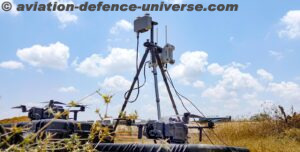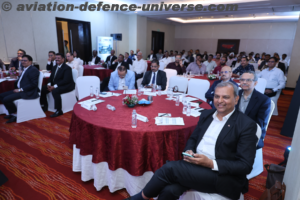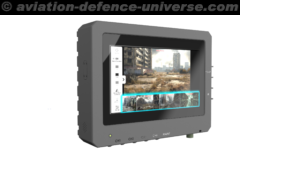- A recent campaign saw Leonardo flying the Osprey 50 radar on a B200 King Air in the UK, demonstrating the second-generation AESA radar’s wide range of modes
- Osprey has been an international success, having been sold to 12 customers. The new Osprey 50 is the largest and most capable variant in the radar family
- Leonardo has also re-used technology developed for the Osprey family to re fresh its Seaspray range of radars, ensuring they will continue to deliver market -leading capabilities for years to come
Rome. 19 December 2019 . Leonardo has announced the first flight trials of its Osprey 50 Active Electronically Scanned Array (AESA) radar, the new, larger-aperture variant of the Company’s successful Osprey surveillance radar. The flight trials were carried out in support of production for a Strategic ISR platform and Collins Aerospace’s Tactical Synthetic Aperture Radar (TacSAR) reconnaissance system.
Osprey is a multi-mode radar family based on solid-state AESA technology and remains the only system of its type currently available which delivers full spherical coverage with no moving parts. Among other benefits, this allows the radar to be installed on platforms where a rotating antenna would be unsuitable. The Osprey family has been an international success, having been sold to 12 customers. Osprey 50 is the largest and most capable variant, providing enhanced performance for overland, maritime and air-to-air missions. It is ideally suited to medium and large aircraft which can provide the required space and power.
Osprey 50 builds on the established market position of the Osprey 30 model which is available in fixed-panel and gimballed variants and has proven to be extremely popular for manned and unmanned ISR platforms. Customers have selected Osprey for its capability, flexibility of installation and affordability. Osprey 30 is installed on the US Navy MQ-8C Firescout (where it is designated AN/ZPY-8) and on the Norwegian All-Weather Search and Rescue helicopter, the Leonardo AW101.
Leonardo has also re-used technology developed for the Osprey family to refresh its Seaspray family of AESA surveillance radars, ensuring that Seaspray remains a market – leading long range radar for maritime operations for years to come. Hardware and signal processing techniques developed for Osprey have been introduced back into Seaspray to increase capability and reduce system weight.


































































































































